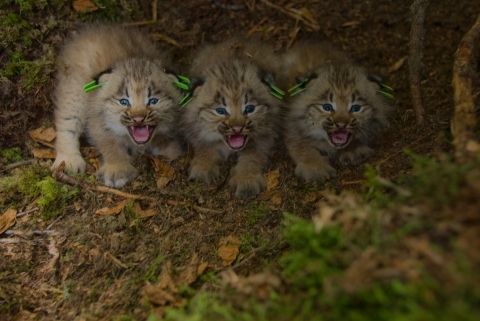What We Do
The refuge provides management and enhancement of habitats for wildlife populations, thereby contributing to biological diversity and providing wildlife-oriented public uses. Refuge staff are working to restore important wildlife habitats that were altered by previous military use of the land.
Management and Conservation
Located in close proximity to the Canadian border, Aroostook’s vegetation contains elements of the sub-boreal forest that occurs further to the north and hardwood forests typically found in southern parts of the state. The refuge is a comprised of a composition of forested habitats interspersed with streams, ponds, wetlands and grasslands. Northern softwood forests dominated by black and red spruce, tamarack, balsam fir, white cedar, aspen paper birch and red maple are the principle trees found on the refuge.
Due to the buffered pH in the soil from limestone deposits rare plants, orchids and wildflowers occur on the refuge. Lady slippers, Canada lily, trout lily, pitcher plant, sundew, and many, many more are found at Aroostook National Wildlife Refuge.
Aroostook NWR provides long term conservation of important upland and wetland habitats for migratory birds and the federally threatened Canada lynx. The refuge provides management and enhancement of habitats for wildlife populations, thereby contributing to biological diversity and providing wildlife-oriented public uses. Refuge staff are working to restore important wildlife habitats that were altered by previous military use of the land.




